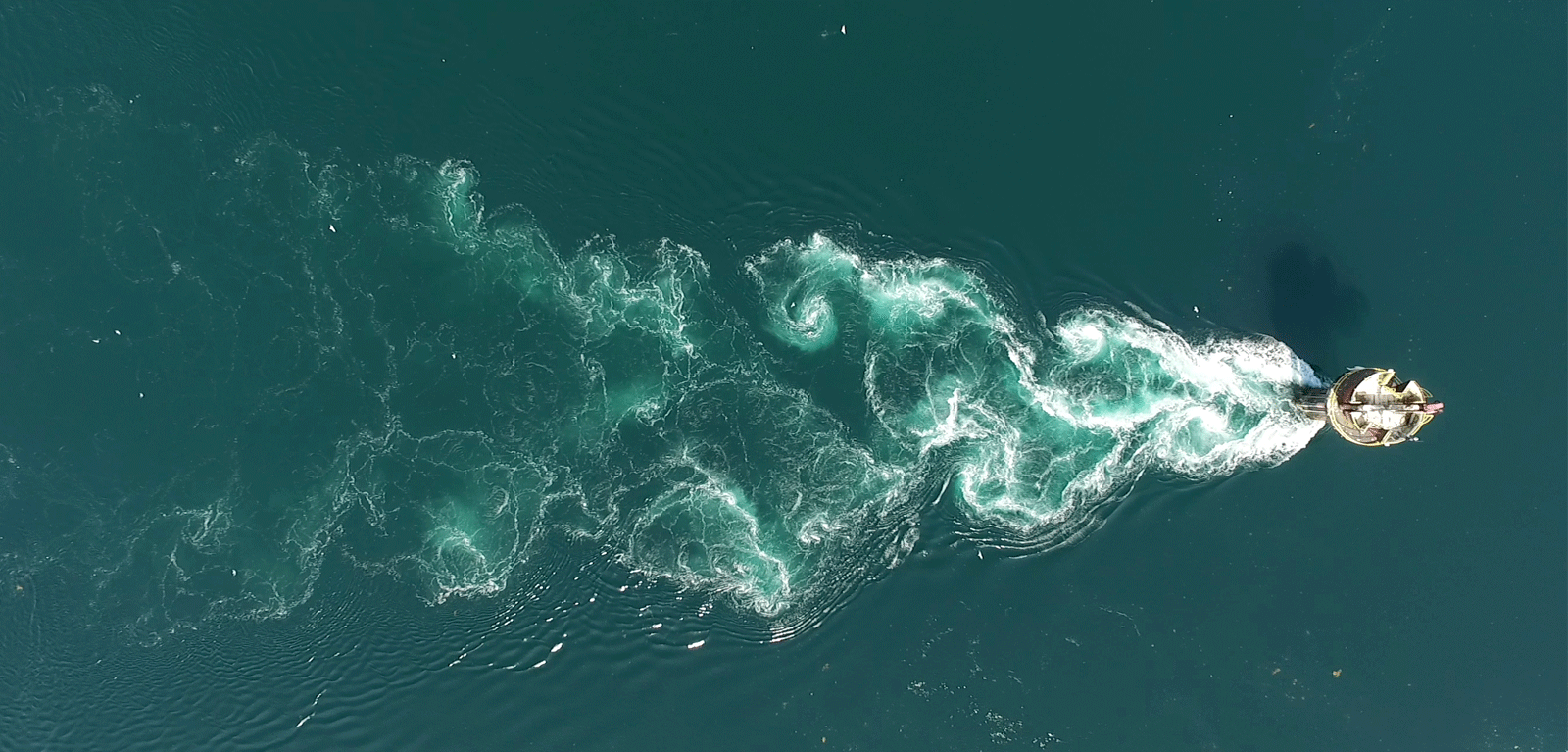Man-made structures can be feeding hotspots for seabirds, new research finds
Man-made structures set in tidal streams can be a feeding hotspot for seabirds, according to new research.

Marine scientists from Queen’s University Belfast, University of Plymouth and Bangor University carried out the research in a tidal channel linking Strangford Lough, Northern Ireland, with the Irish Sea.
Strong currents interacting with hard structures, including boulders, piers or floating buoys, can generate turbulent wakes which at times, can make prey available to surface foraging seabirds, such as terns.
The researchers investigated the number of terns feeding at three highly dynamic wake features.
They focussed on two natural wake sites, a rock island and a whirlpool, and a man-made site – the wake of the SeaGen tidal energy structure. SeaGen was in the process of being removed during the study so the turbines were absent, and the wake was being generated from the monopile (tower).
While terns searched for food at all three wake features, on average, tern numbers were highest at the man-made wake, which also experiences the highest currents.
Dr Lilian Lieber, Bryden Centre Research Fellow from the School of Chemistry and Chemical Engineering at Queen’s, led the research.
She explains: “The aim of our study was to understand predator responses to environmental change; such as how man-made structures cause changes to local flow dynamics and how this may affect seabird foraging.
“We found that SeaGen’s wake has the power to mix up the entire water column, making potential prey items more accessible to foraging terns, similar to a prey conveyer belt.
“We used a combination of vantage point counts, drone flights, hydrodynamic modelling and hydroacoustics (using sound to measure underwater characteristics) and found that SeaGen’s wake generated the most intense foraging hotspot for terns, coupled to the flood tide.”
Co-investigator Dr Alex Nimmo-Smith, an oceanographer and UAV pilot at the University of Plymouth, added: “The drone provided an eye in the sky, allowing us to track the highly localised foraging behaviour of the terns over SeaGen’s turbulent wake structure.”
While the researchers cannot determine if this had an overall positive effect on the local seabirds, their research is timely – highlighting the ecological implications of changes in local flow patterns to top predators when installing or removing offshore structures. The removal of SeaGen will give the researchers the opportunity to investigate how these patterns will change following the completion of SeaGen’s decommissioning.
The research has been published in the Nature research journal Communications Biology.
Media
Media inquiries to Jemma Greenlees at Queen’s University Communications Office T; +44 (0)28 9097 3087 E; j.greenlees@qub.ac.uk.